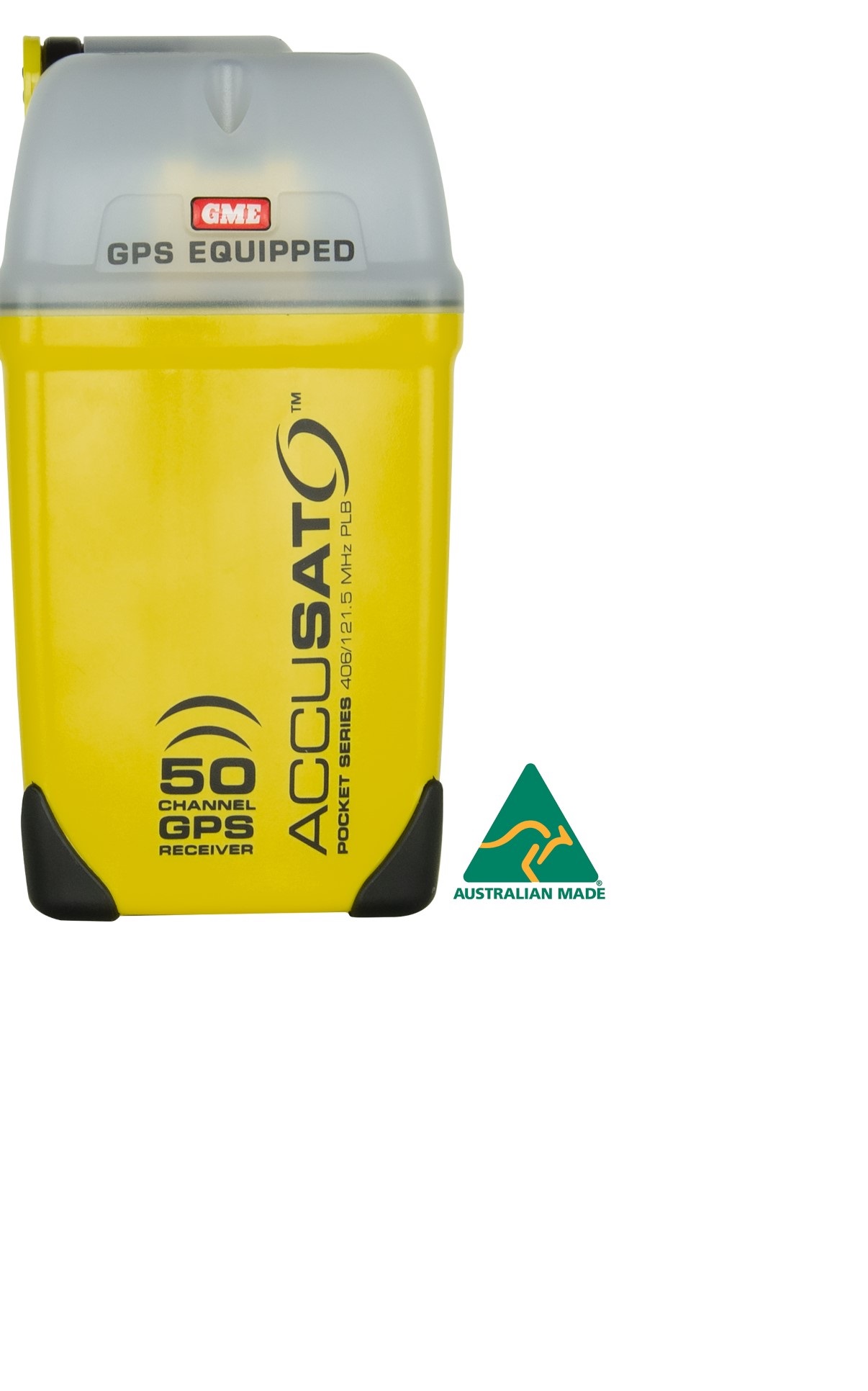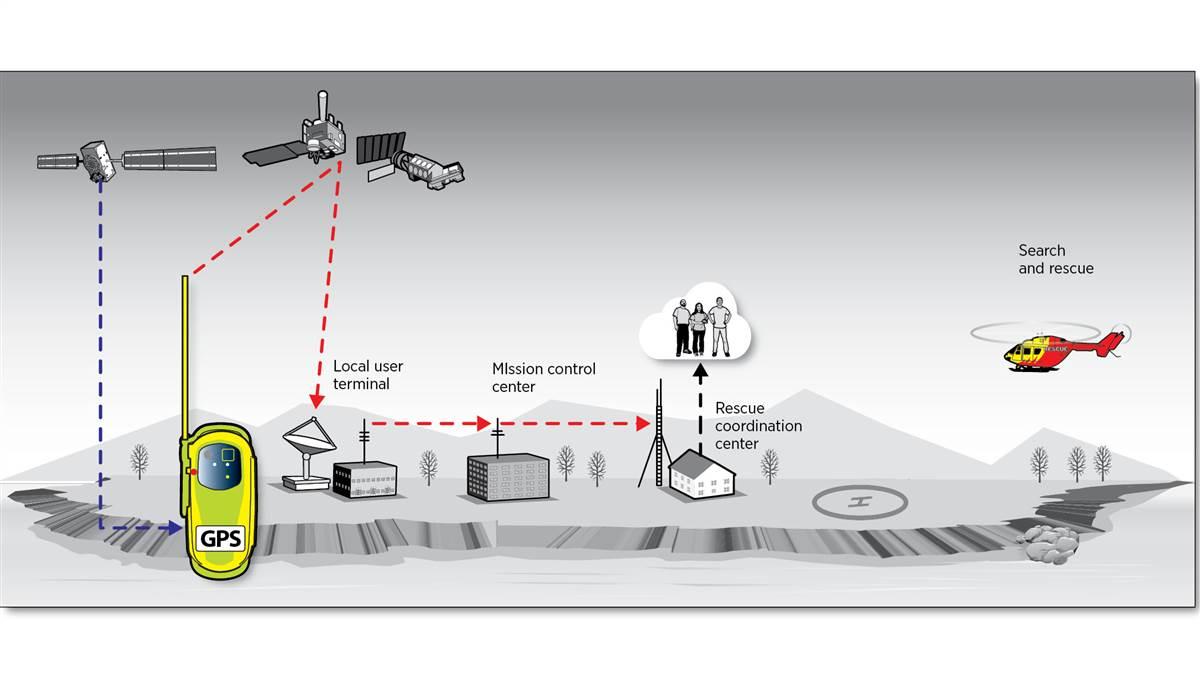Read more
a plb, or personal locator beacon, is a compact device that sends out a distress signal with your exact location should you find yourself in a dangerous situation. When activated in an
emergency
, the plb sends out a signal to the dedicated search and rescue (sar) satellite network.
 This signal carries specific information about the beacon and its registered owner, enabling a rapid and targeted response from emergency services. In australia, which is known for its vast outback and treacherous terrain, the use of a plb can be the difference between life and death. Whether you're hiking in the blue mountains, trekking through the kimberley region or sailing along the great barrier reef, having a plb offers added peace of mind.
This signal carries specific information about the beacon and its registered owner, enabling a rapid and targeted response from emergency services. In australia, which is known for its vast outback and treacherous terrain, the use of a plb can be the difference between life and death. Whether you're hiking in the blue mountains, trekking through the kimberley region or sailing along the great barrier reef, having a plb offers added peace of mind.
Types of emergency locator beacons [ edit ]
Each icon on this map represents one rescue event within the u.
 S. Area of responsibility (aor) in the last 14 months, though multiple saves may be involved with each event. The search and rescue satellite aided tracking (sarsat) system is able to detect three types of beacons: an individual’s personal locator beacons (plbs), maritime emergency position indicating radio beacons (epirbs), and aircraft emergency locator transmitters (elts). Who responds to the search and rescue are dictated by the location of the distress. For any beacon activation that occurs in the u. S. Aor, the u. S. Is responsible for responding.
S. Area of responsibility (aor) in the last 14 months, though multiple saves may be involved with each event. The search and rescue satellite aided tracking (sarsat) system is able to detect three types of beacons: an individual’s personal locator beacons (plbs), maritime emergency position indicating radio beacons (epirbs), and aircraft emergency locator transmitters (elts). Who responds to the search and rescue are dictated by the location of the distress. For any beacon activation that occurs in the u. S. Aor, the u. S. Is responsible for responding.
In 2021, nasa technology saved 330 lives in the u. S. Network region of the international satellite-aided search and rescue effort, cospas-sarsat. Nasa has lent technical expertise to the cospas-sarsat program since its founding, aiding in the rescue of over 48,000 individuals globally. Users purchasing commercially available 406 mhz frequency cospas-sarsat beacons have free access to the network, which provides accurate and reliable emergency location services. When users activate these beacons, they send signals through satellite instruments to ground stations that can calculate their position. The network then alerts first responders to the location and nature of the emergency.
Emergency beacons, or emergency locator beacons, are an essential piece of safety equipment that every skipper should have onboard their vessel; they use gps to connect to the emergency coastguard in the event of an emergency. Here at marine super store we stock both epirb emergency beacons and plbs and personal ais by mcmurdo and ocean signal. We know if a bit can be daunting for pick the right safety beacons with such as vast range of models available. If you need more information about the different types of safety beacons and their key differences, check out our guide to safety beacons.
Search-and-rescue response [ edit ]
How long does it take to be rescued the time it takes for search and rescue personnel to reach you depends on a number of factors, including the weather, terrain and accessibility of your location. The more remote the location of the distress incident, the longer the response time. In all instances, be prepared to survive. Satellites cannot detect beacons through mountains, trees or buildings. If your beacon has not been deployed correctly with the aerial vertical in a clear open area or you are located in a valley, geostationary (geo) satellites are unlikely to see you. In these cases, you must wait for polar-orbiting (leo) satellites to pass overhead, which may take several hours.
The gen4 has a clear and easy-to-use sos button. Activating this feature sends your location and an alert, via satellite relay, to focus point international inc. (spot llc contracts with fpi for emergency dispatch. No other us private sector satellite messengers use fpi dispatch. Focus point international is new to us; we first learned of this company when spot changed their dispatch service from a different outfit in 2021). At fpi, presumably like at the other outfits, a team of search and rescue dispatch experts works to secure the help of resources local to your position. This service is crucial, and this is what the spot device offers.
Plbs can be a lifesaver in an emergency situation while scuba diving. If you become lost or separated from your dive boat activating a plb can quickly alert authorities to your location and expedite rescue efforts. Increased safety and security while diving ability to quickly and accurately locate you can signal for help when out of range of other communication devices may reduce search and rescue time and costs compact and lightweight, easy to carry while diving can operate in remote areas.
A personal locator beacon takes the ‘search’ out of search and rescue. They’re compact, lightweight and, when compared to the potential cost of not carrying one, inexpensive. Gps and 406mhz all modern beacons transmit a 406mhz signal, but some also transmit the older 121. 5mhz signal to help searchers home in on your location once they arrive in the vicinity. Your chosen plb should also be gps-enabled so it can send your exact location to searchers. Registration it is a legal requirement to register your plb with the rescue coordination centre new zealand (rccnz). There is no charge to do this and once completed, your plb’s distress signal will be linked to your personal information – name, address, emergency contact phone numbers, medical conditions – that can offer clues to your specific needs as well as speed rescue response time.
Emergency Locator Transmitters [ edit ]
Personal locator beacons (plb) and emergency locator transmitters (elt) are distress radio beacons that help to detect your location while in distress. Our personal locator beacons now feature gps using the dedicated 406mhz frequency. They are activated when immersed in water and transmit your precise gps location to the global network of search and rescue satellites.
Personal locator beacons, or plbs, are portable radio transmitters, which aid the search and rescue (sar) emergency services in the detection and location of persons in distress. These devices operate in a similar manner to emergency position indicating radio beacon (epirbs) onboard vessels and emergency locator transmitters (elts) onboard aircraft. When used correctly, and registered, a plb helps to identify the owner and their location to the emergency services. Only plbs that are programmed with the irish country code (250) may be registered with comreg. Plbs that have another country code programmed into them are not valid for use in ireland and cannot be registered as in the event of an emergency the relevant authorities/services may not have accurate information.
Safety on the seas is an important aspect of any boating experience, whether you're on a simple three-hour tour in a 30-foot cabin cruiser or on a large vessel making its way across an entire ocean. When the unexpected happens and your survival is at risk, you want the assurance that you can be quickly located when your distress signal is sent. The marine epirb devices (emergency position indicating radio beacons) and elt transmitters on offer here are meant to do just that. They are high-quality personal epirbs that operate on the dedicated cospas-sarsat 406 mhz frequency, which is the standard international radio frequency to signal distress on the seas.
Personal Locator Beacon [ edit ]
Epirb (emergency position indicating radio beacons) and plb (personal locator beacons) are a quick and effective way to alert emergency services of your maritime distress. A locator beacon allows search and rescue (sar) agencies to react with speed and accuracy to identify and locate a person, or vessel, in an emergency situation.
Reading time: 2 minutes a personal locator beacon (plb)* is a highly reliable and effective way to communicate a serious and dangerous situation to emergency services. A plb, when activated, sends the location and the device identity via emergency communication satellites and commercial aircraft. It is a one-way communication. A plb does not provide any information about the nature of the emergency. It should only be activated in a situation of grave and imminent danger – when faced with a life threatening situation. (* plbs are sometimes called epirbs, but the term epirb is now limited to emergency beacons for marine vessels.
Personal locator beacons are small yet resilient and have been engineered and tested to ensure they can withstand the harshest of elements. They give you comfort in the fact that you can go rogue but know that rescue is in the palm of your hand if need be. Shop instore or online 24/7. Enjoy home delivery or free click & collect today! popular search.
Emergency locator beacons are valuable tools to have on board during a boating, hunting, or hiking emergency. An emergency position indicating radio beacon (epirb), or a personal locator beacon (plb) are great ways to reach help in a search and rescue situation. Brands like acr, mcmurdo, and ocean signal all make exceptional emergency beacons that pinpoint a near exact gps location.
No comments:
Post a Comment